What is an irresistible offer?
Simply put … an irresistible offer is one that your audience cannot help but respond to. It’s compelling, it’s powerful, and it drives action.
So, how do you craft an irresistible offer?
The answer comes down to personalization: presenting information that applies directly to each customer in a one-on-one, emotionally charged, and above all customized manner—pefectly mapped to their stage in the customer journey.
To do this, I’ve put together an in-depth look at 4 “adaptive” (i.e., sometimes called “smart content”) features along with some helpful SaaSs to automate the process so that you can start adding to your sales funnel today:
- Segmented and Personalized Emails
- Dynamic Images and Pricing
- Optimized CTAs
- Targeted Onsite Coupons and Incentives
1. Segmented and Personalized Emails
Talk of the “death of email marketing” has ceased.
Despite the rise of all things social, marketers know that email isn’t going anywhere anytime soon.
In fact, according to a recent McKinsey & Company study, email is still a whopping 40 times more effective at acquiring customers than Facebook and Twitter combined. As the study points out:
91% of all US consumers still use e-mail daily, and the rate at which e-mails prompt purchases is not only estimated to be at least 3 times that of social media, but the average order value is also 17% higher.
Email is anything but dead.
The catch, however, is that today, the old “one size fits all” email strategy doesn’t work. And just A/B testing isn’t enough.
So, what does work?
Segmentation and personalization.
To segment means to divide your audience — your market — into distinct and definable parts which are both accessible and actionable. Segments are more profitable and have greater growth potential than the traditional outbound marketing that casts a message at everyone, hoping it resonates with some.
As the Lyris Annual Email Optimizer Report found, when asked to indicate their top three results of segmentation, the figures were astounding:
- 39% of marketers who segmented their email lists experienced higher open rates.
- 28% experienced lower unsubscribe rates and
- 24% experienced better deliverability and greater revenue.
Where should you focus?
The “current customer” versus “prospective customers” division pays off huge. Why? Because not only does “acquiring a new customer costs 6-7 times more than retaining and selling to an existing one,” but “existing customers are your most profitable source of recurring revenue.” As the White House Office of Consumer Affairs points out, “On average, loyal customers are worth up to 10 times more than their first purchase.”

This means the bulk of your effort should be directed at marketing and building rapport with your existing customers … the people who have already said “Yes.”
With prospect emails, use tactics like overcoming objections, offering free trials, highlighting social proof, and pitching entry-level products and services.
With customers, go for the upsell and the recurring sale. Focus on new products and service upgrades by connecting what they’ve already bought with the next step in your product orbit.
Well defined email lists take time and effort. This is where the right SaaS can drastically impact the process.
Benefits to using a SaaS provider for advanced segmentation in your email marketing campaigns comes down to ease of use and scalability.
In fact, if you’re a segmentation novice, consider trying out these three “recipes” built on whether your subscriber is a frequent responder, a newbie, or a “sleepyhead.”
But what if you’re short on data?
This is where personalization comes in because “everyone loves the sound of their own name.”
As Chris Hexton pointed out in a CXL post, PadiAct were able to increase their open rate by 5% and their CTR by 17% simply by including each subscriber’s first name — as well as the magic word “you” — in their email marketing.
Segmentation and personalization can also be applied to simple demographic information.
For example, in 2014 YPR magazine used targeted text and images based on their customer’s gender and language.
The results were dramatic:
- 73% unique open rate
- 42% unique click through rate
- 57% overall click through rate
This case study focused on customers that had already converted, but the same concept can easily be applied to a fresh prospect list.
2. Dynamic Images and Pricing
First off, let’s level the conversational playing field with a couple of definitions.
Dynamic images are aspects of your website, email, or ad that either (1) adapt to your viewer based on their previous visits or purchase history or (2) allow your visitor to interact with or see the product in action.
Custom pricing follows the same basic principle, but takes into account inventory levels and product demand to automatically adjust pricing enticing your customer with the one thing we all love: devoted attention.
After interviewing executives at twelve leading digital agencies, Forrester Consulting concluded, “rich digital media is not just a trend; it’s the future of advertising. Agencies leveraging innovative design tools and technology have proven their effectiveness in driving higher engagement online in a cluttered web environment.”
Dynamic Images
Product description pages are the hinge point of your sales funnel.
More often than not, product pages are incredibly dull. There tends to be an emphasis on lengthy text descriptions faintly supported by grainy, as-good-as-stock-photography-gets pictures. Incredibly dull.
Despite the fact that they play a pivotal role in converting visitors into buyers, we often overlook product descriptions. And nowhere is this more true than neglecting the human element.
Your customers crave personalized interaction. In fact, Harris Interactive discovered that “53% of online shoppers cite a lack of human interaction as a reason for abandoning the shopping cart.” Moreover, a staggering 86% of consumers actually want more ways to interact with a brand or product. Description pages with dynamic images offer this kind of interaction and personalization your visitors want.
There are essentially two types of dynamic product images you can start creating for yourself:
1. 360 Degree Images
360 degree images offer a view of your product closest to an in person experience. With rotational capabilities that allow the product to be examined from multiple angles, customers can get a true-to-life feel of your product.
This first example is essentially a simple product image brought to life. And Apple’s MacBook design page uses this same feature, with an animated twist.
You can even create your own 360 degree images by following these basic guidelines:
- Use a white background and a turntable. Do not move your camera or object manually to take product photos.

- Take 24 photos of your product, each at roughly 15 degrees apart:

- “Stitch” your photos together using 360-degree product view software. Here’s a list a few sites to check out:
- Top Pick: RotaryView.com. A user-friendly cloud based software, Rotary View promises is the easiest to master. Simply upload your photos and Rotary View does the rest. Pros: Offers interactive, clickable image layers and personalization to keep viewer’s attention and boost your site’s optimization. Cons: If you want the mass upload feature, you’ll have to spring for the one of the more expensive monthly plans.
- Runner Up: Kolor.com. Also lets you create panoramas and virtual tours. Upload your photos direct to the site to access via the cloud or edit remotely with the downloadable version. Pros: They offer hardware and photography equipment to boost the quality of your product displays. Cons: No refunds are given and major software upgrades aren’t included in initial purchase.
- Second Runner Up: MelownSpin.com. When you upload your photos to MelownSpin, the cloud-based site automatically generates your 360 degree product image. Using an embedded code you can share the images easily. Pros: Melown offers an absolutely FREE version for under 500 user sessions per month. Cons: There are only two plans… free and $0.02 per “interaction,” which can add up if your images are successful!
2. Active Images
Active images are exactly what they sound like: full motion gifs or 5-10 second interactive video clips of the product in action.
More than just embeded videos, however, active images are also clickable (just like dynamic images).
For instance, both of these full-body views highlight one specific product.
[Layout side by side]
And more than just being beautiful, all two approaches are incredibly effective. Luminate, for instance, reported a 20% mouse-over (hover) rate for dynamic images and Brian Vinikoor, from ThingLink, reported an amazing 82% CTR for theirs, compared to the company’s global average of 4.4%.
Want to make your own interactive video? Here’s how:
- Shoot 3-5 seconds of video (longer than 5 seconds and your file sizes will be huge)
- Using Photoshop import all or part your video (File > Import > Video Frames to Layers)
- Edit your colors, crop your frames, get it looking just right
- Add a layer for your CTA button
- Save your work as a GIF, ideally less than 1MB in size (File > Save for Web)
Here’s how to make your own interactive image:
- In Photoshop, select File > Scripts > Load Files Into Stack (if you choose, you can upload individually too)
- Click browse and select photos to use (images will be uploaded in layers)
- The bottom layer is the image that will appear first, so arrange your photos accordingly
- Sequence your layers by clicking Window > Animation or Timeline (depending on your version)
- Select “Make Frames from Layers”
- Set the frame duration under each image below the preview screen.
- Save your work as a GIF, again, the smaller the better (File > Save for Web)
Of course, there are also a ton of GIF makers available online, but to make your active images yourself, Photoshop is recommended.
For both types, simply upload your video or image and follow this code string for linking your image to another page.
Dynamic Prices
Pricing anything is complicated, but that’s exactly why automating the process is spreading like wildfire. Automated pricing software allows your site to instantly adjust to supply and demand, inventory levels, competitor prices, trends and more … all in real time.
From airlines to hotels, online retailers to movie theaters, dynamic pricing is maximizing sales. Traditionally, only large companies could justify the time and dollar expense of implementing a dynamic pricing software. Not anymore.
Today options exist for small and medium sized companies to reap the rewards of instant price updates. In fact, the top 5 traits (PDF) of businesses currently using dynamic pricing software goes far beyond business size:
- These companies don‘t publish prices (other than on their websites, which are constantly updated)
- They rarely raise the lowest available price
- They report few or no patron complaints
- They have weekly reviews of sales and pricing
- They report total season revenue increases of up to 4%
Currently, only 22% of retailers have chosen to implement it. But by the end of the year, it’s forecasted that another 43% of retailers will be implementing intelligent pricing.
How can dynamic pricing help you make an irresistible offer?
As Darin Archer, head of product strategy and marketing for Adobe Commerce, dynamic pricing allows ecommerce sites to “focus on maximizing the price they can get from each customer—that is, not the lowest and not necessarily the highest, but rather what people are willing to pay for the products they’re interested in buying.”
Best of all, not only does automation make your life easier, on average it improves gross margins by 10%.
Many software options are available to help you implement your own dynamic pricing strategy. Take, for example, Wiser. By tracking visitors history, buying paths, traffic, and — most importantly — your competitors’ prices (see “Spy Agent” image below), your own prices flex automatically to meet demand.
3. CTAs (call to action buttons)
To be irresistable, your CTA button can’t just be pretty. Here’s two examples courtesy of econsultancy.com:
First, the bad. Then the good.

Where is this CTA? Stuck in his armpit. Ahhh…a beautifully clear action button!
There are lots of guides to creating and testing your CTA button. For example, CXL has a great one here.
However, to be most effective in the current online marketplace, personalization is the ticket to being irresistible.
Personalizing a call to action on your website isn’t easy. Tracking buyer paths with the highest conversion score is again a job best done by algorithms.
Netflix, for instance, employs dynamic CTA’s based on their buyer’s history. Check out this example aimed at a previous customer. Notice the CTA copy: “Restart Your Membership.”
How can you create your own automated CTAs?
One solution is TrenDemon. Their algorithms identify the most lucrative buyer pathways — from blog posts and landing pages to product-description-pages and subscription signups — and engage your customers with recommendations and custom CTAs based on their real-time activity.
Tailoring your CTAs to what your customers are actually doing dramatically improves engagement. How dramatically? On average conversions from existing content and traffic increase between 150% to 400%. You can read more about the specific in this case study that produced a whopping 247% lift in sales.
As always, the point is to leverage data on both your customers as well as your own best practices to make the click irresistible.
4. Targeted Onsite Coupons and Incentives
In-house marketers who use personalizing web experiences and who are also able to quantify the improvements see an average of 19% uplift in sales – this according to Monetate, a personalization vendor (suspiciously high number, have not seen raw data for this claim). Improving your bottom line through dynamic incentives is possible, but only through understanding the buyer.
Kroger, who pumps out individually targeted quarterly coupons, was named 2013 Retailer of the Year by Progressive Business Magazine. This was due in part to the phenomenal return rates and revenue they boast for targeted incentive campaigns. A spokesperson of Kroger told Forbes just how successful…
“We see in the next six weeks [after a mailing] 71 percent of households will redeem at least one coupon in the store. The coupons have generated $10 billion in revenue for Kroger.”
Generating $10 billion in revenue by sending 48 individualized coupons per household per year is nothing to ignore. This type of return comes from knowing the existing audience extremely well. Kroger notes that 80% of the focus is on knowing the customer, and 20% on discovering the customer. For incentives, this comes down to defining your buyers.
So how do you target your own incentives … online?
The most intelligent campaigns come from well defined buyer groups. Start examining your list with these categories:
- Recency: how recently a person bought or visited.
- Frequency: how often that person buys.
- Value: the average dollar value of their purchases.
- Lifestyle: namely traffic source (where they came from to get to your site), geographic location, and income.
- Price consciousness: Is this person buying the best or the cheapest?
Once you’ve narrowed your buying groups, pick incentives tailored to the group. CXL offers a few starter ideas like offering free shipping to first-time buyers, or coupons to get them in the door.
This list is a good start, but automation can run this process much more efficiently than any marketer can manually.
One savvy SaaS offering this kind of “behavior targeting” is Fanplayr. For example, by segmenting Seattle Coffee Gear’s products and visitors into three groups — high margin, low margin, and “all others” — the company was able to create discount offers of varying value that only display when prospects visited specific product pages.
As a result, Seattle Coffee Gears’ average order grew by 30% and their overall revenue increased by 49%. Here’s a screenshot of how some of your own custom coupons might appear:
The use of real-time information like purchase history, pageviews, device type, search term and referral source are all powerful resources for creating your own segmented offers that appear strategically throughout your visitor’s onsite experience.
Think of your custom coupon and final nail your sales-funnel coffin. It’s the last little nudge that can literally make your offer impossible to refuse.
Conclusion: Welcome to Your Personalized Sales Funnel
It’s true. You really can make your audience an offer they can’t refuse using:
- Segmented Emails
- Dynamic Images and Pricing
- Personalized CTAs
- Targeted Onsite Coupons and Incentives


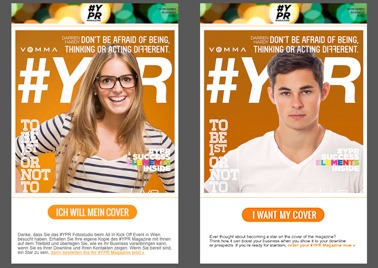





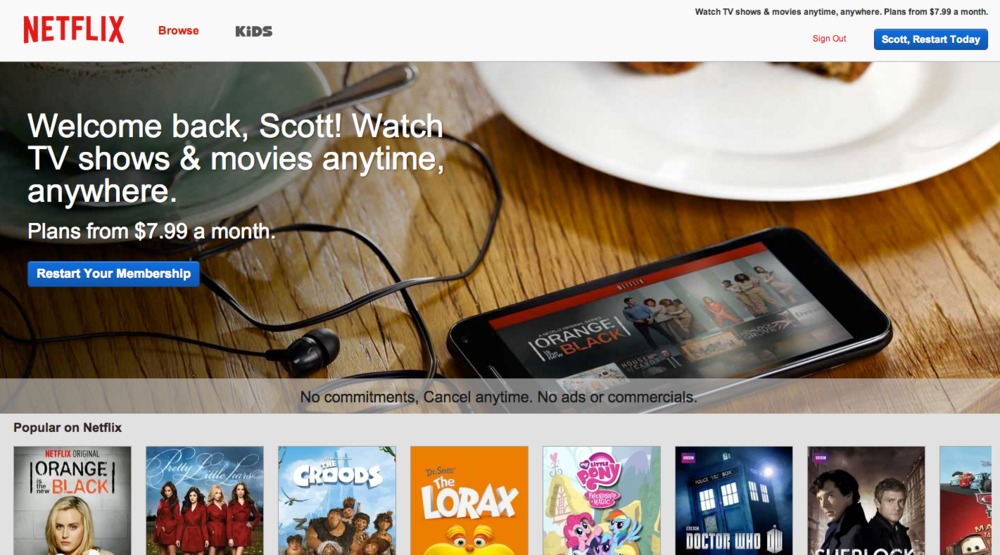
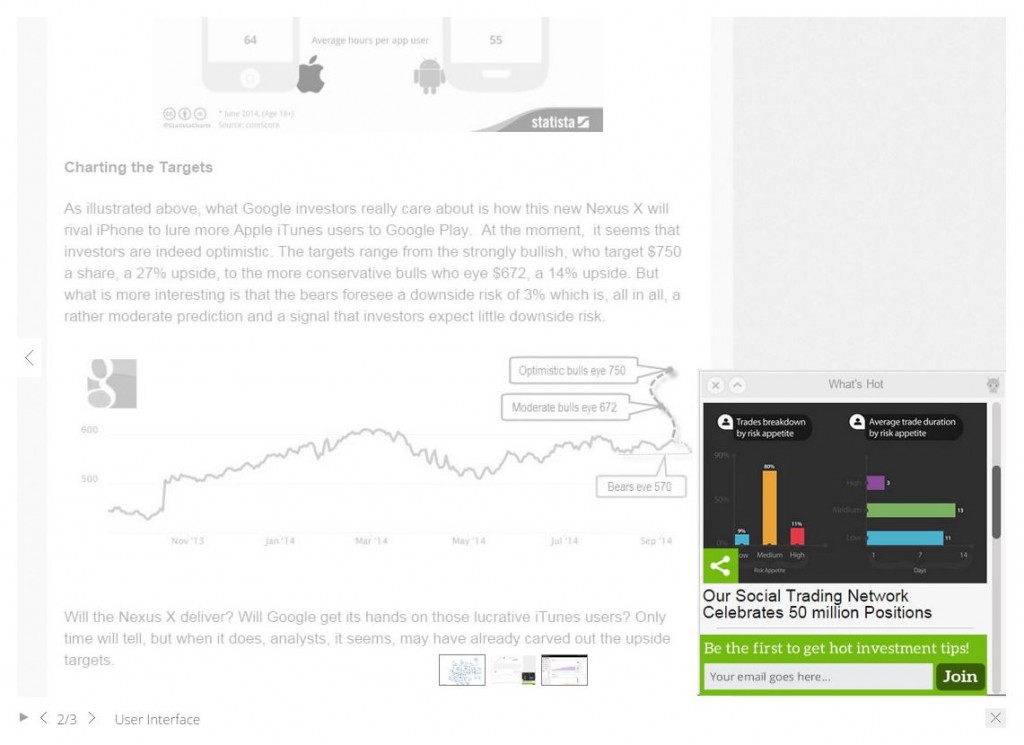

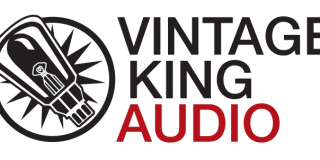

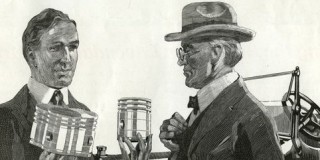
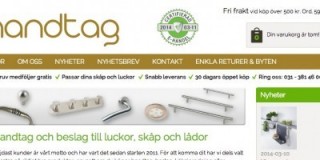
Fantastic share, Aaron.
Loved the actionable and detailed tips in your post.
I have 10 years of experience as a salesman and I have always put myself in the shoes of my clients (or potential ones), in order to understand how to better help them and how to ensure that the product or service sold would be useful (and not just pushed).
In your audience, each of your users has a specific age, occupation and culture, with different communication languages.
Segmentation through targeting each group via personalized messages, specific media and different prices is an effective way to boost sales.
Thanks, Eric.
Whether in person or online … personalization and segmentation — actually getting to know your audience and adapt them — is key.
Got any favorite tools or tips?
Very nice post! I love all of the great information. Thanks Peep!
Thanks for compliment, Randy!
And (of course) thanks Peep for the guest post opportunity. :-)
Awesome content again peep, I usually take at least an hour to read one of your posts with all the links and extra content. BUT I love it. Peep what is a good open rate and CTR rate for emails at the moment.
Cheers Ray
Better than what you had last time you sent an email.
Ignore averages.
Here, here! If I could “up vote” a comment … this would be it.
Great post Peep. personalized email marketing is something that I really need to take a look into. This is a great start for me. Thanks
Peep, allowing articles like this on your blog gives the industry a very bad name. You and I both know that a ugly little coupon flyout widget doesn’t have a chance of improve overall conversion rate by 40%. At most it would be a couple percent likely negative value on profit dollars/session.
Thanks for the feedback, Ryan.
Hopefully the other tips were helpful. ;-)
Thanks for the feedback. I hear ya.
Aaron, you know how hard it is to improve overall conversion rate on an ecommerce site by even 5%?
If you’re article was remotely true or properly vetted from a journalist standpoint, Peep could quit his business and install coupon dispensing flyout widgets and double everyone’s sales overnight.
This kind of unvetted journalism with bogus data is rampant in this industry. Peep has very high integrity and I’m surprised junk stats like this are allowed to be published
Thanks for chiming in, Ryan.
You mean the sentence that personalized coupons “on average achieve a 19% uplift in sales”? Yeah never seen that in real life. The number comes from Monetate who of course is a personalization vendor (thus biased), but what I have seen is ~20% uplifts in personalized segments (e.g. Pinterest traffic gets 20% conversion lift boost).
As long as numerical claims are linked to a source (esp if it’s a case study), I’ll allow it – but I do hear your feedback about setting unrealistic expectations, thank you.
Nice Post!
Aaron, can you suggest a couple of dinamic pricing software more than Wiser?
Thanks a Lot, you’re great!
Francesco
Wiser is the only one I’ve had experience with … and their folks have put up some great articles at places like econsultancy.
There are more than a handful of other providers, but I can’t really recommend one. Sorry.
Thanks for the answer Aaron!
Thanks Aaron for the post (Found it from GrowthHackers) and for the real world examples. I think retargeting is something which is extremely important if you want to personalize sales funnel, can you give me list of some retargeting tools ? I have tried AdRoll on our product AeroLeads but have mixed results of it.
My brother recommended I might like this web site.
He was once entirely right. This put up truly made my day.
You cann’t consider just how a lot time I had spent for this info!
Thanks!
Hi Aaron,
These are some great tips. I like the idea of personalized emails. They always help in getting through to your audience. The best way to personalize your sales funnel is to put yourself in your client’s shoes. If you don’t like what you see, then it’s time to rethink your strategy.
Thanks for sharing these valuable tips.
Thanks for the encouragement, Brian.
And you’re totally right … empathy — putting yourself into your client’s shoes — is ALWAYS the starting point!
Hey Aaron,
Great post here and took away a couple of things you were trying to get across. Know the customer and personalization! Whenever something it sent to me applying this concept, I’m more likely to open the email and see whats in store for me. And this is the thinking of many of your customers!
Thanks for sharing and I hope you have a great week!
I found your post on kingged.com under the Email Marketing category
http://kingged.com/an-irresistible-offer-4-tips-to-personalize-your-sales-funnel/
Thanks, Sherman. Glad you found the article on Kingged … and super glad you found it helpful!
Killer post! I’ve been tossing up segmenting my list…. Thanks for the push over the edge!
Thanks, Alex. We all need nudges … glad I could be yours. :-)
Amazing. The active image thing is not obvious – feels like the 90’s all over again!
This is really an amazing post. I also believe that personalization in all the email is the key to achieve best results.
Thanks for this :)
Segmentation begins the personalization process. It reflects good insights into customer problems and dangles the right solutions on their eyes.
Yes, the remainder of the 4 personalization process should not be ignored. What matters most is that each of the tips readily address the needs of the customer in special way!
I left this comment in kingged.com where this piece was found and upvoted.
Thanks designed for sharing such a pleasant opinion, piece of writing
is pleasant, thats why i have read it entirely
Hmm it looks like your website ate my first comment (it was extremely long) so I guess I’ll just sum it
up what I wrote and say, I’m thoroughly enjoying your blog.
I as well am an aspiring blog writer but I’m still new to everything.
Do you have any suggestions for novice blog writers?
I’d certainly appreciate it.
It may seem like a minor detail, but personalized emails go a long way. Personalized anything, for that matter, are a subtle, yet helpful touch that can really help out your marketing strategy.
Esse tipo de pintura é perfeito para enfeitar todas as peças que queremos valorizar.